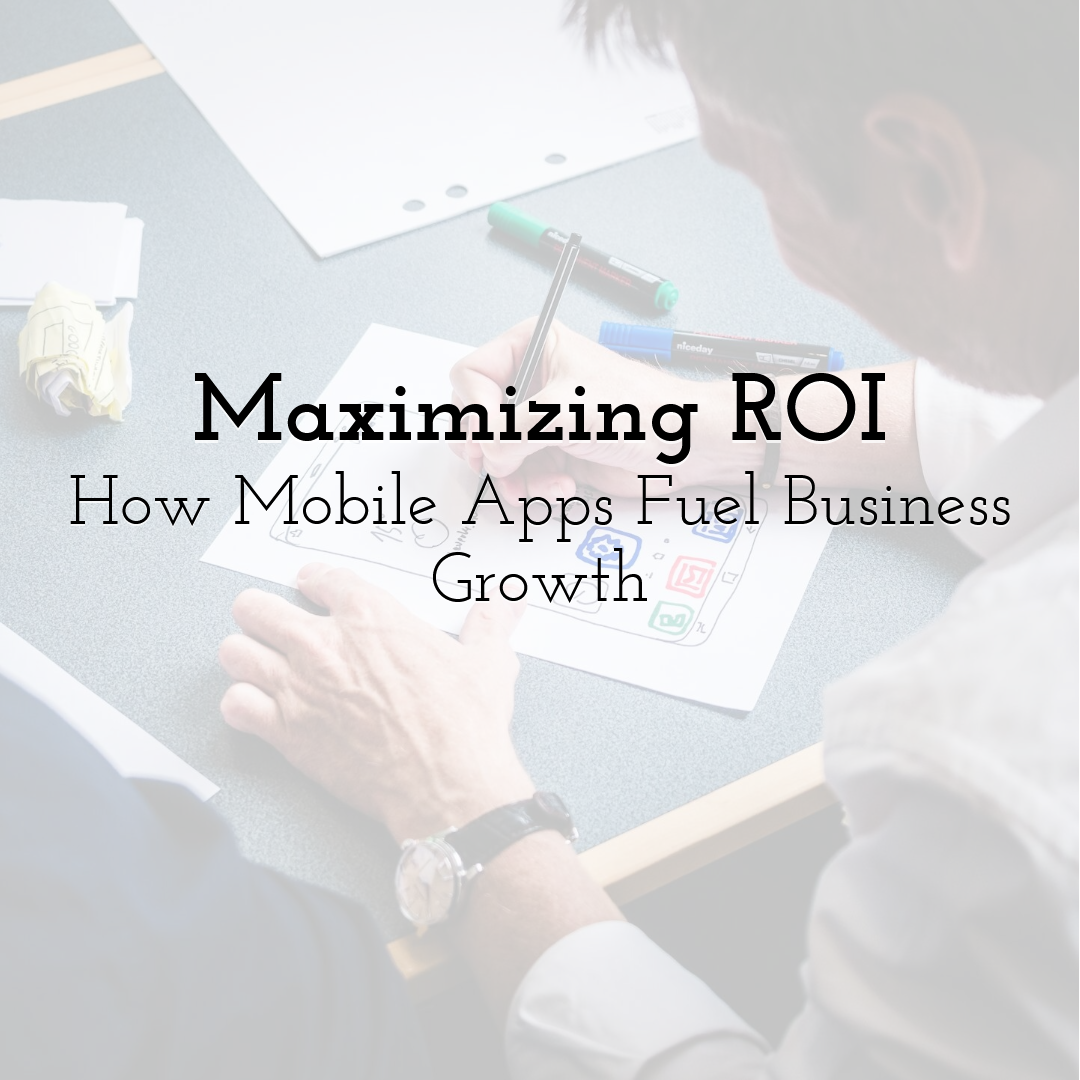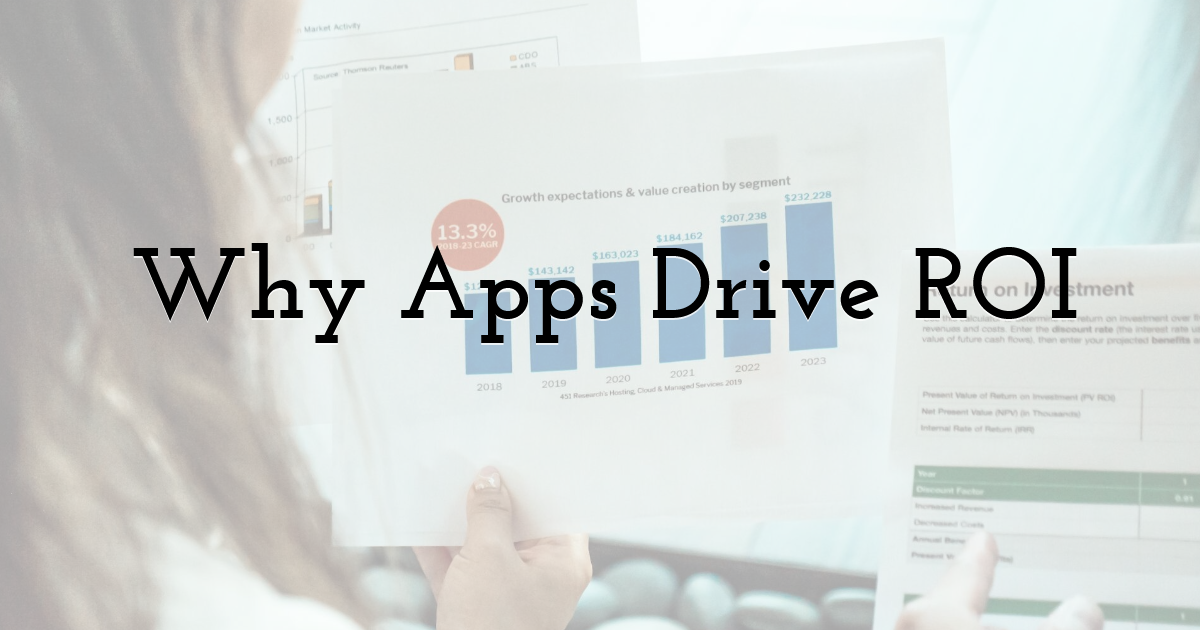Maximizing ROI: How Mobile Apps Fuel Business Growth

Growth is harder to achieve in a market where competition is relentless and customers expect more than ever. Companies can no longer rely solely on traditional approaches; they need smarter, faster ways to deliver results.
Smartphones have evolved from luxury gadgets into essential companions. People bank, shop, stream entertainment, and even manage their health through mobile devices. This shift has transformed the way companies connect with their customers. Mobile apps are no longer optional; they are a powerful lever for growth and profitability. But beyond the hype, the real question for business owners is clear: how do apps actually generate return on investment (ROI)?
In this article, we will explore the numbers behind the mobile revolution, the strategies that turn apps into ROI drivers, and the practical steps businesses can take to maximize growth through mobile technology.
The Mobile Revolution in Numbers

To understand why apps offer so much potential, consider the scale of smartphone adoption. More than 6.3 billion people worldwide use smartphones, and 1.14 billion use tablets. These devices are deeply integrated into daily life. In fact, the average American checks their phone 262 times per day, and 88% of mobile time is spent inside apps rather than browsers.
The market opportunity reflects this ubiquity. Mobile apps generated over $935 billion in revenue in 2024, with millions of apps competing for attention on Apple’s App Store and Google Play. Usage is not limited to younger consumers either. Surveys show 96% of respondents own a smartphone, making mobile the preferred device for shopping, banking, and entertainment.
For businesses, these numbers send a clear message: mobile apps are the most direct channel to reach consumers where they spend the majority of their digital time.
Strategic App Development as a Growth Lever

A strong mobile strategy begins with the right foundation. Businesses that treat apps as serious investments see higher returns, while those that cut corners struggle with poor adoption and wasted budgets. Smart app development ensures the product is aligned with business goals, supports scalability, and delivers user experiences that drive engagement.
To achieve this level of precision, many companies turn to experts who specialize in building apps that combine functionality with user appeal. Firms like DreamWalk bring expertise in crafting apps that balance intuitive design with technical precision. Their focus on user-first design, robust functionality, and scalable architecture helps startups and established companies launch apps that deliver measurable ROI from the start. With expert guidance, businesses can avoid costly mistakes such as clunky navigation, poor security, or a lack of scalability, all of which erode returns.
Placing development in the hands of experienced professionals ensures that apps are not just visually appealing but also optimized for performance, security, and long-term growth.
Why Apps Drive ROI

Apps deliver measurable value in multiple ways, from strengthening customer relationships to driving direct revenue. Understanding these mechanisms is key for businesses that want to translate downloads into sustainable growth.
1. Deeper Customer Engagement and Loyalty
Mobile apps foster ongoing relationships by offering convenience and personalized experiences. Customers carry apps in their pockets and can engage at any time. Personalization is especially powerful: nearly 69% of consumers are more likely to purchase from brands that personalize experiences, and companies with advanced personalization report 71% higher customer loyalty.
Push notifications are a proven tool for engagement. Effective notifications increase session frequency and retention. Research shows that emojis in notifications boost open rates by 85%, while targeted reminders for abandoned carts or flash sales keep the brand top-of-mind. The more relevant the interaction, the stronger the customer connection, which directly fuels ROI.
2. Increased Conversion Rates and Revenue
Apps streamline the purchasing process more effectively than websites. Users are often logged in, with payment methods stored, making one-click purchases effortless. A study found that subscription sign-ups are 60% higher on mobile devices compared to desktops.
Apps also support revenue-driving features such as loyalty programs, exclusive offers, and personalized recommendations. Beyond retail, apps monetize through subscriptions, in-app ads, and data-driven services. Combined, these models contribute to the nearly trillion-dollar app economy.
3. Rich Consumer Insights and Personalization
Apps generate detailed behavioral data that can be turned into actionable insights. Companies can track user preferences, test new features, and refine marketing strategies with greater accuracy than web analytics allows. Deloitte notes that businesses that master real-time personalization report stronger revenue growth compared to their competitors (deloitte.com).
For example, segmentation enables brands to deliver customized offers, while A/B testing features provide clear insight into what drives conversions. This level of data-driven agility ensures that apps evolve alongside customer needs, strengthening ROI over time.
4. Brand Presence and Customer Convenience
Every time a customer installs an app, the brand logo becomes a constant presence on their home screen. This visibility is unmatched by other marketing channels. Apps also simplify customer journeys by consolidating multiple services in one place, from checking balances and tracking orders to streaming content or accessing customer support.
Convenience translates into goodwill, which in turn builds higher customer lifetime value. The more seamless the experience, the more likely customers are to remain loyal to the brand.
Strategies to Maximize Your App’s ROI

Recognizing how apps generate value is only half the picture. To achieve consistent returns, businesses must follow proven strategies that convert potential into measurable results.
Build a Solid Foundation With User Experience
ROI begins with a product that solves real problems. Poor user experiences drive abandonment. Nearly 73% of users stop using an app due to design or navigation problems, and one in five expect key tasks to be completed in five seconds or less.
Best practices include:
- • Simplify navigation with clear menus and logical flows.
- • Optimize performance by reducing load times and testing across devices.
- • Ensure accessibility with legible text, captions, and support for assistive tech.
- • Focus on security. 90% of users want transparency about in-app privacy before downloading.
A polished, intuitive experience makes adoption more likely and boosts long-term returns.
Embrace Personalization and Customization
Once usability is in place, personalization becomes the growth driver. Deloitte found that brands with advanced personalization were 48% more likely to exceed their revenue goals. Apps can segment users by demographics, behavior, or past purchases and deliver relevant offers, features, or notifications.
Smaller companies can start with broad segments and refine as data grows. Even simple tactics like highlighting a restocked favorite product can increase engagement. Over time, personalization compounds into stronger loyalty and higher revenue per user.
Implement a Robust Notification Strategy
Notifications serve as a bridge between apps and users. When well-executed, they boost engagement and conversions. Best practices include:
- • Aligning messages with user behavior.
- • Respecting time zones and avoiding oversaturation.
- • Using rich media and deep links to drive users to specific features.
Studies show that cross-channel notification strategies combining in-app, email, and push deliver the highest results. Done right, notifications become powerful tools for retention.
Monitor Performance and Iterate
An app is never finished. Monitoring metrics such as downloads, retention, session length, and conversion rates helps identify opportunities for improvement. Regular updates keep apps competitive and responsive to user needs. Persistent performance issues, on the other hand, are among the top reasons users delete apps (itransition.com).
Ongoing iteration keeps an app relevant, strengthens its reputation, and ensures ROI does not plateau.
Protect User Data and Build Trust
Data security is not negotiable. A single breach can damage reputation, erode customer confidence, and lead to expensive litigation. Surveys consistently highlight that users avoid apps they perceive as unsafe.
To prevent this, businesses must encrypt data, use secure authentication methods, comply with relevant privacy regulations, and clearly communicate their policies. Regular security audits and transparent updates ensure that customers are reassured that their information is handled responsibly. Companies that prioritize trust not only reduce risk but also strengthen loyalty, creating long-term relationships that directly support ROI.
Measure ROI With Clear Metrics
ROI must be measured against more than just revenue. Metrics such as acquisition costs, retention rates, engagement levels, and customer lifetime value provide a more comprehensive picture. For example, tracking how load time improvements affect session length can connect user experience investments directly to revenue outcomes.
Defining success early, whether it is increased sales, reduced churn, or higher engagement, ensures that resources are allocated effectively and efficiently.
Mistakes That Undermine ROI

Many apps fail to deliver because of preventable mistakes:
- • Ignoring real user needs.
- • Simply replicating web features in an app.
- • Overloading with notifications.
- • Neglecting performance, design, or privacy.
Avoiding these pitfalls requires a user-first mindset and continuous optimization. Businesses that take a strategic, data-driven approach stand out in a saturated market.
Final Thoughts:
Mobile apps offer more than convenience. They deliver measurable ROI through enhanced engagement, increased revenue growth, valuable insights, and strengthened brand presence. With billions of smartphone users worldwide and nearly a trillion dollars in app-driven revenue, the opportunity is massive.
Businesses that prioritize user experience, personalization, security, and continuous improvement turn apps into engines of growth. By partnering with trusted experts when needed, they maximize returns and future-proof their digital strategy. Done right, mobile apps are not just another channel; they are a foundation for business success in the digital age.
Until next time, Be creative! - Pix'sTory
Recommended posts
-

How to Create a Moodboard for Your Brand
Read More › -

Navigate the Pros and Cons of AI-generated images for Your Businesses
Read More › -

Investment in Digital Business is Next to Maximization of Profits
Read More › -

How to Monetize a Blog: 7 Steps to Go From Hobby to Hustle That Pays
Read More › -

8 Ways to Improve eCommerce SEO Traffic
Read More › -

Instagram and Email Marketing - How Valuable Giveaways Can Build Your Ema...
Read More ›
